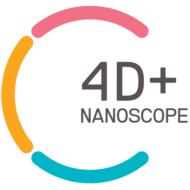![]() Bone is a highly complex and dynamic tissue consisting of both inorganic minerals and organic components. In humans, bone remodeling takes place throughout the entire life. Bone mass is continuously built up during the first 20 years of life, followed by a balanced bone build-up and breakdown over the next approximately 30 years or so before an aging phase associated with bone loss and the development of osteoporosis and thus an increased risk of fracture. Aging, loss of estrogens during menopause and inflammation are the three key factors that support bone loss and the tendency to fracture. It is known that the same factors stimulate osteoclast-mediated bone loss at the expense of osteoblast-mediated bone formation.
Bone is a highly complex and dynamic tissue consisting of both inorganic minerals and organic components. In humans, bone remodeling takes place throughout the entire life. Bone mass is continuously built up during the first 20 years of life, followed by a balanced bone build-up and breakdown over the next approximately 30 years or so before an aging phase associated with bone loss and the development of osteoporosis and thus an increased risk of fracture. Aging, loss of estrogens during menopause and inflammation are the three key factors that support bone loss and the tendency to fracture. It is known that the same factors stimulate osteoclast-mediated bone loss at the expense of osteoblast-mediated bone formation.
Based on a better understanding of bone anatomy and the microarchitecture of bone, better drug treatments can be developed or surgical interventions can be supported. To achieve this, a detailed 3-dimensional (3D) description of the bones in different length scales (from macro to nano) is required, as well as knowledge of how the bone structure changes under stress and over time (especially in response to medication). Dynamic monitoring represents the fourth dimension that can only be achieved by in vivo monitoring of bone remodeling, and the “+” in the title indicates that additional information on bone morphology and properties, including mechanical strength and composition, is monitored, from which additional structure-property relationships can be derived.
Standard treatments of bone loss in humans either block osteoclasts and inhibit bone resorption (by bisphosphonate and RANKL inhibitor) or stimulate osteoblasts and thereby foster bone formation (by parathyroid hormone and sclerostin antibodies). While both sorts of treatment result in an overall increase in bone mass, the different effects of these pharmaceutical interventions on bone microstructure have so far only been addressed superficially. Data from this project will be used to determine how best to treat Osteoporosis and to assess the importance of nutrition, genetics and activity for healthy aging of bone.
Within the Department of Internal Medicine 3 human bone samples will be collected to permit a systematic analysis of how health, nutrition, exercise and drugs affect bone structure and strength. These samples will be used throughout the project.
Experimental workflow and tissue selection
Three factors thought to affect bone quality will be explored in mice: aging, post-menopausal bone loss and inflammatory bone diseases. This task will complete the detailed experimental design, and tissue samples, as listed in the table.
| Ageing | Human articular contiguous bone biopsies from younger and older men | No study of medication. |
| Post-menopausal bone loss | Human articular contiguous bone biopsies pre-and postmenopausal women | |
| Inflammatory diseases | Human articular contiguous bone biopsies from patients with systemic inflammatory diseases such as arthritis or inflammatory bowel disease |
